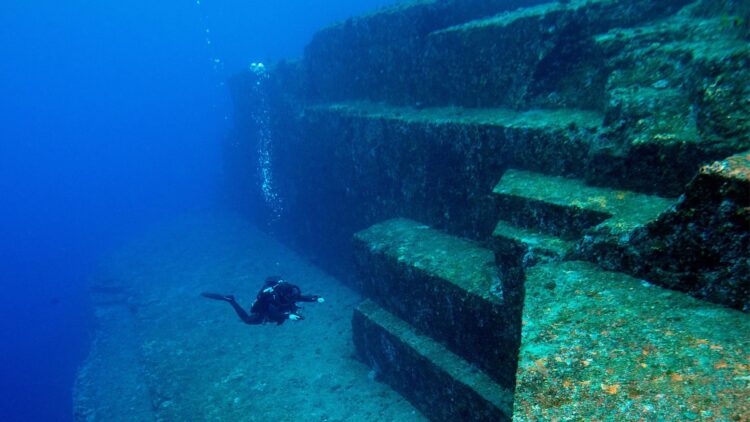For years, the legend of Atlantis has captivated the imaginations of scholars, adventurers, and dreamers alike. Now researchers in Spain have taken a significant step toward uncovering a possible connection to this ancient myth in the form of a mountain that sank into the ocean millions of years ago. Importantly, this range contains traces of constructed formations that may just prove Atlantis’ existence.
Researchers discover a submerged mountain that may hold the key to Atlantis legend
While carrying out an expedition to study volcanic and hydrothermal activity off the east coast of Lanzarote, which forms part of the Canary Islands, a team from the Geological and Mining Institute of Spain (IGME-CSIC) deployed a remotely operated vehicle (ROV). Their mission was to explore a seamount—a submerged mountain consisting of three inactive volcanoes—located beneath its depths ranging from 330 to 8,200 feet.
Sitting approximately 14 miles beneath the ocean’s surface and extending 31 miles in length, the geological characteristics of the seamount suggest that it once stood prominently above the waves as a series of islands before sinking into the Atlantic Ocean.
Upon further inspection through the ROV, the team noticed similarities between the features observed at the seamount—dubbed “Mount Los Atlantes”—and that of the fabled Atlantis, which sank after the ancient Greek civilization incurred the wrath of the gods.
Simply put, Luis Somoza, the team leader, states, “This could be the origin of the Atlantis legend.”
Evidence suggests that Mount Los Atlantes once existed as vibrant islands
The IGME-CSIC team’s exploration revealed what Mount Los Atlantes might have looked like before it sank: it existed as a cluster of islands during the Eocene epoch, which lasted 56 to 34 million years ago. The three volcanoes regularly erupted during this time.
However, once these eruptions ceased, the resultant lava solidified and became denser. This caused the islands to gradually sink into the ocean.
“They were islands in the past, and they have sunk,” says Somoza. “They are still sinking, as the legend of Atlantis tells us.”
Despite its submerged state, remnants of the lost islands’ topography remain, as indicated by the ROV’s imagery and data collection.
Future expeditions are being planned to further explore this mysterious region
Per these findings, the team was able to identify beaches, cliffs, and sand dunes at the flat summit of the seamount. Some of these beaches sit 200 feet below the ocean’s surface. This means that these areas, along with the volcanos, would have been visible during the previous Ice Age when sea levels were lower and could have supported wildlife. But when the Ice Age ended and sea levels rose, these islands sank again into the sea.
Mount Los Atlantes not only serves as a means to reignite interest in the Atlantis legend, but it also counts itself as a crucial point of study for the team and other scientists determined to understand the geological processes that took place in the Canary Islands region. Somoza says the team intends to analyze samples from the seamount to date the volcanic rocks and determine when the islands began sinking.
Additionally, Somoza says they plan to return for another expedition to the region next year, which may unlock further secrets of the seamount—and its potential connection to Atlantis!
The discoveries around Mount Los Atlantes provide exciting possibilities for both geological and historical research. As scientists continue to investigate the seamount, there are hopes they could unearth evidence of past civilizations. Ultimately, their efforts might bridge the gap between reality and mythology, shedding light on the origins of one of history’s most enduring legends.

